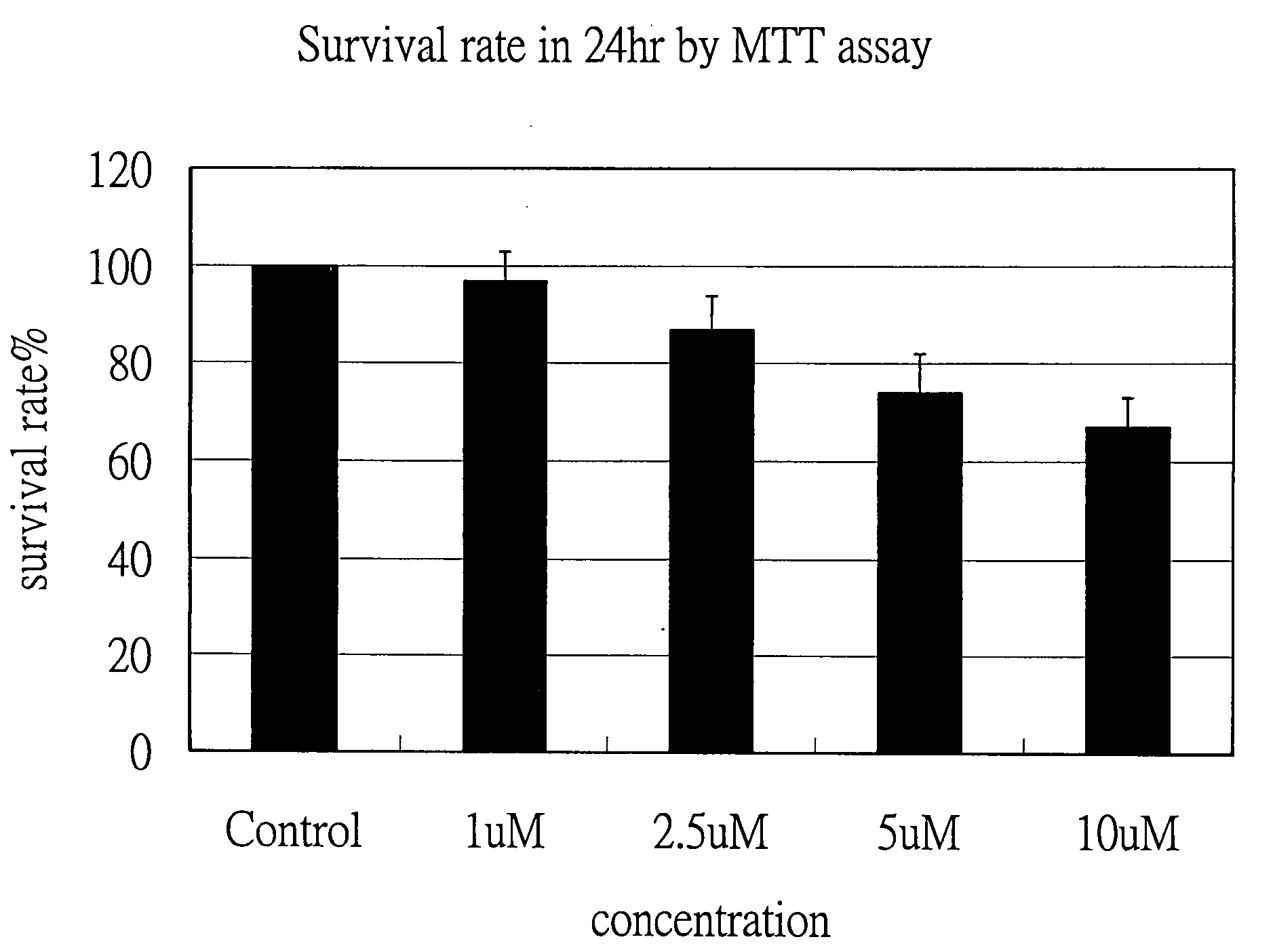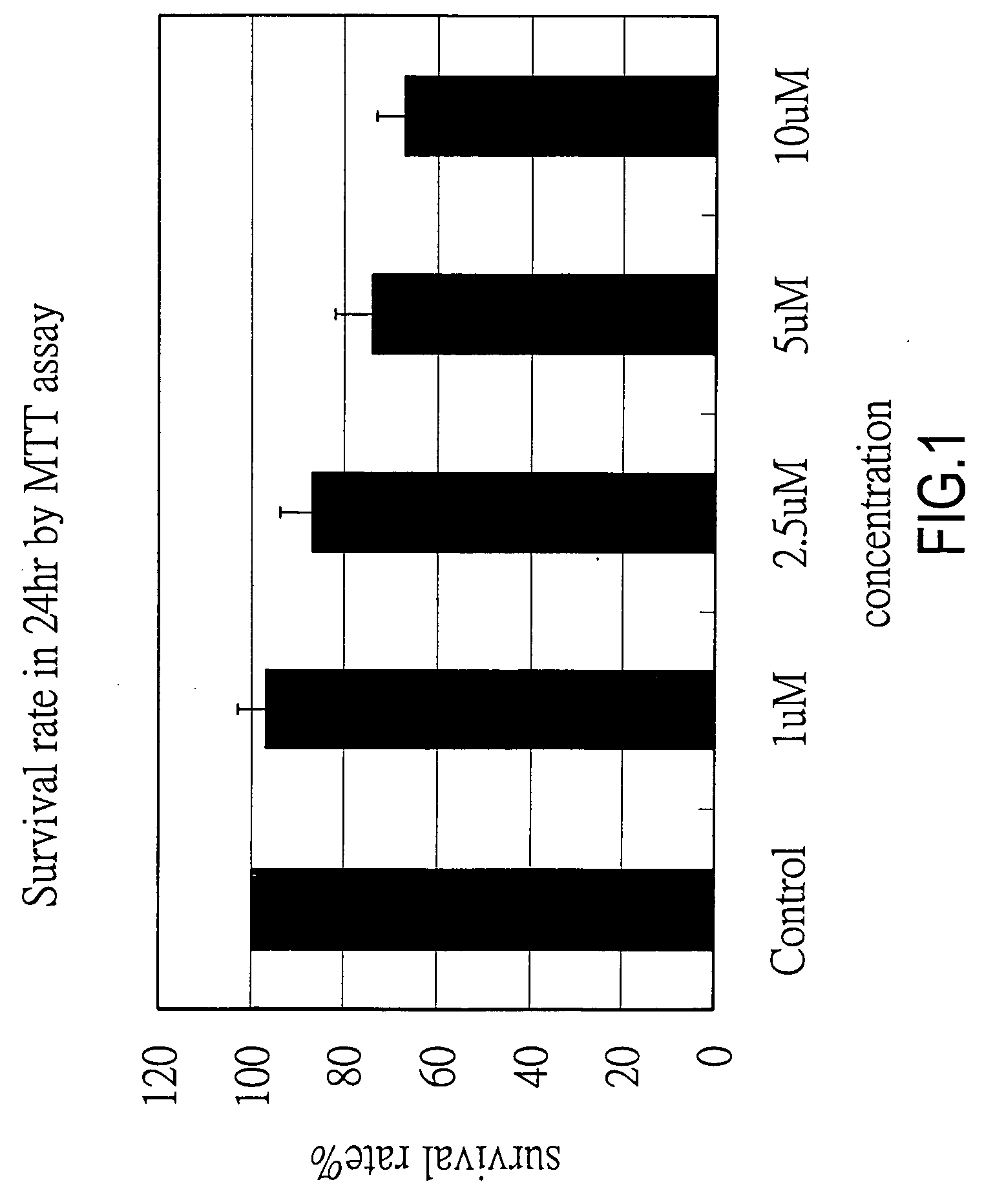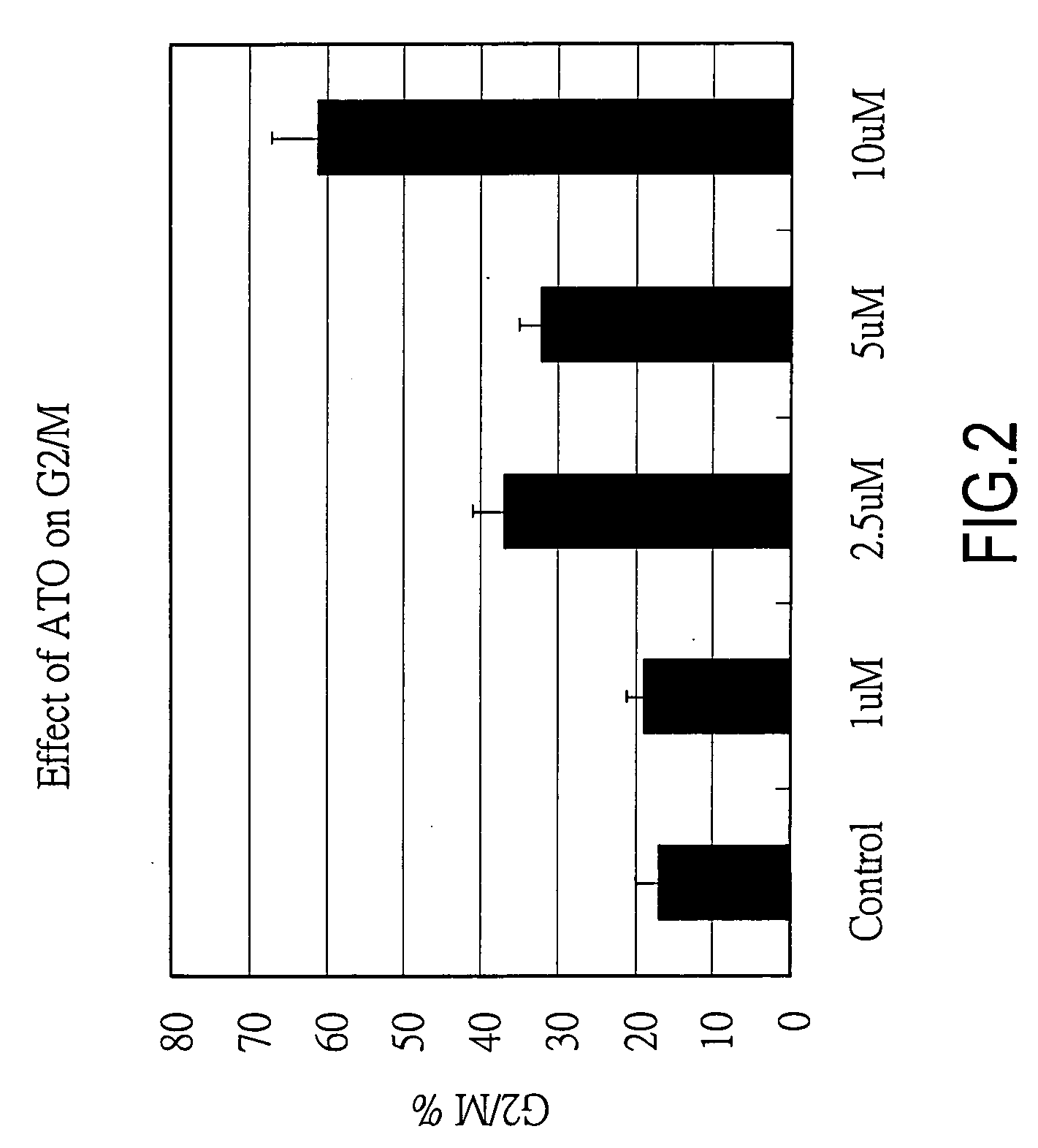Arsenic compounds for the treatment of the arsenic-sensitive blast-cell related diseases
a technology of arsenic and blast cells, applied in the field of arsenic compounds for the treatment of arsenic-sensitive blast cells, can solve the problems of high risk patients, high blood pressure, diabetes and osteoporosis,
- Summary
- Abstract
- Description
- Claims
- Application Information
AI Technical Summary
Benefits of technology
Problems solved by technology
Method used
Image
Examples
example 1
Arsenic Trioxide Induces Apoptosis of T cells and Peripheral Blood Mononuclear Cells in Vitro
[0054] Arsenic trioxide (Asadin®) induces differentiation and apoptosis of malignant cells in vitro and in vivo and has been used in the treatment of a variety of hematological malignancies, the main goal of this example is to try to identify the apoptotic effect of arsenic trioxide on various PBMCs (peripheral blood mononuclear cells), and the methodologies used in this invention include:
[0055] 1. The isolation procedure using Ficoll Plaque for exploiting the different densities of RBCs and PBMCs to separate them.
[0056] 2. The detection of apoptosis by PI staining through flowcytometry.
[0057] 3. The detection of apoptosis within different subsets of PBMCs by the combination of mAb-fluorescein tandem staining and the treatment of Phiphilux through flowcytometry. Phiphilux is a substrate of caspase-3, composed of a specific oligo-peptide with its sequence subjected to functional caspase-3...
example 2
Biological Effect of Arsenic Trioxide on Cultured Human Fibroblasts Showed Highlighted on Cell Cycle and Arsenic Compound Treated Fibroblasts Underwent Both Apoptosis and Necrosis
[0061] Arsenic trioxide has been approved for APL (acute promyelocytic leukemia) therapy, and though much work remains to be done on the application of arsenic trioxide and the mechanism of arsenic toxicity is not fully understood, several recent works pointed out the involvement of oxidative stress in arsenic-induced DNA damage in living cells may cause cell cycle arrest. In cultured human fibroblasts exposed for 24 hr to 1 to 10 μM arsenic trioxide and the fibroblasts were assayed by MTT assay, flowcytometry and western blot and promoter leuciferase assay to find out the biological effect of arsenic trioxide on cell cycle of cultured human fibroblasts, and though it was found that arsenic trioxide can cause fibroblasts cell cycle arrest especially in G2 / M, on the molecular level, p53 seems to be bound wi...
example 3
Method for the Treatment of Asthma and Like Hypersensitivity Diseases by Administration of Arsenic Compounds
3.1 Materials and Methods
[0063] BALB / c mice (female, 6-8 weeks) were immunized with ovalbumin (OVA) at day 0, 14, 21 and 28. 38 days later, animals were injected with arsenic trioxide (ATO) i.p. for 7 days and antigen challenges with OVA were performed at day 42, 43, 44. At day 45, the airway enhanced pause (PenH) values were measured. 48 hours after the last antigen challenges, the mice were sacrificed, the trachea cannulated, and bronchoalveolar lavage (BAL) was performed by four repeated lavages with balanced salt solution (HBSS) injected into the lungs via the trachea. Total cell counts were performed with a hemocytometer after staining with trypan blue, and then cytospins were prepared, and a differential count of 300 cells per slide was performed. To obtain the absolute number of each leukocyte subtype in the lavage, the percentage of each cell type was multiplied by ...
PUM
 Login to View More
Login to View More Abstract
Description
Claims
Application Information
 Login to View More
Login to View More - R&D
- Intellectual Property
- Life Sciences
- Materials
- Tech Scout
- Unparalleled Data Quality
- Higher Quality Content
- 60% Fewer Hallucinations
Browse by: Latest US Patents, China's latest patents, Technical Efficacy Thesaurus, Application Domain, Technology Topic, Popular Technical Reports.
© 2025 PatSnap. All rights reserved.Legal|Privacy policy|Modern Slavery Act Transparency Statement|Sitemap|About US| Contact US: help@patsnap.com



